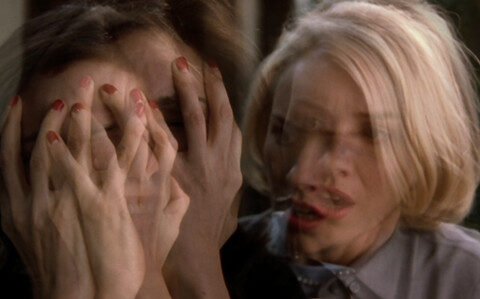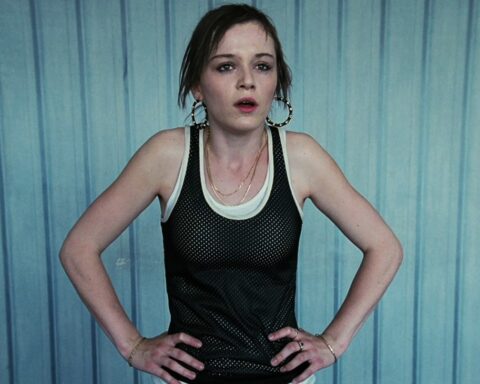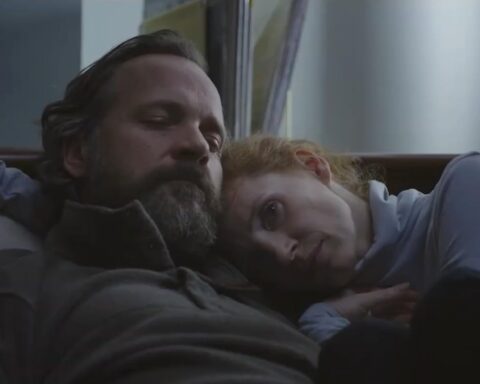Kerr (2021)
Kerr is the film adapted from Tayfun Pirselimoglu’s novel (with the same title) published in 2014.
First of all, it’s very obvious from every frame that Pirselimoglu is also a writer and a painter. In addition to being an adaptation, the film is linked to the literature with many other references; my favorite was Kafka – The Trial homage (not only this reference, but the story and the depressing setting are quite Kafkaesque). Speaking of the painter, the director and the cinematographer should definitely be congratulated for the mise-en-scene and cinematography; frames, horizontal-vertical elements, perspective, light, camera angles, each one is admirable.
I didn’t listen to the director’s interview, frankly, I don’t know if he has such an intention; however, the film seems to be open to interpretation with its overflowing metaphors and surreal narrative. What I understand from the movie is about of our lead character named Can, who was not very touch with his sick father when he was alive, and the nightmares he fought in his subconscious as a result of the guilt when the father is dead.
Very clearly Can does not belong to the city / unnamed place upon the death of his father, shown almost in every scene of the movie. Is this “outsider” son the nameless Stranger of Camus, who arrives in the village after his mother’s death?
Also most probably the nameless and timeless city is subconscious: gray and gloomy, roaming in dilapidated ruins, the floor is always wet (Tarkovsky – Mirror-like*), the attics where it wanders, the surreal inhabitants of the city, the dialogues and stories. And dreams – there is a very open reference to Shining bar scene and a Lynchian amusement park scene supported by mise-en-scène. The hotel and pavilion, which I consider to be the other dream place, may also be a reference to something, I couldn’t catch it, but it’s Kubrick-like in any case. And another piece of evidence – “Who are you?” that Can asks the only woman character in the movie. Her response in return is “Why don’t you just ask yourself” – meaning actually I am you, the demons you fight, the alter egos you perhaps don’t want to see. Likewise, the black hole is like the subconscious gateway, where we throw away many things, including our fear; At the end of the movie, the passage that grows big enough for Can to get out and finally saves him from the nightmare (I will return to these two at the end of the critic).
*Also very well adopted (or inspired by) the Tarkovsky mise-en-scène. In many scenes, it feels like as if we’re watching Tarkovsky movie collages over many indoor and outdoor spaces. Of course, with the dullness and passive being of the protagonist.
Similarly, the repeated expression “it’s very dangerous outside” can be the self’s defense mechanism, a series of paraniod states and meaningless events created by the ego, which feels constantly under threat. Armed outside, rabid dogs barking, all roads closed, no going out; there is just no escape from the subconscious yet!
As psychology suggests, we know that you can only deal with this fear with support from your alter ego. In other words, at the end of the movie, Can escapes from the “killer” alter ego (he may think he killed his father by negligence), fearing that he will subconsciously destroy himself throughout the movie, but reconciles with him, gets in the same “car”, but then crosses the last threshold by crossing the time tunnel, the roads are opened in a controlled manner. And he can subconsciously get rid of the nightmares that chase him.
And the finale, a masterpiece of editing technique; With the transition from the car radio to the radio station with a sound bridge, he bids us farewell from the subconscious and from the movie, it’s only the music that remains.
Nil Birinci






